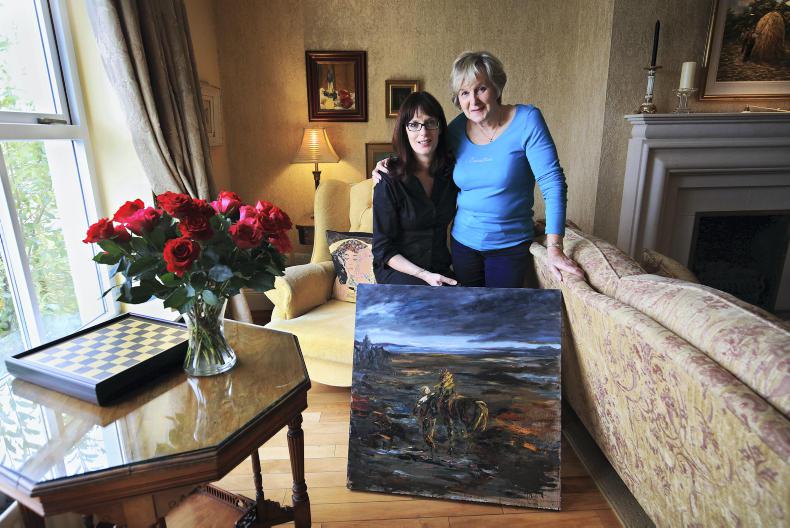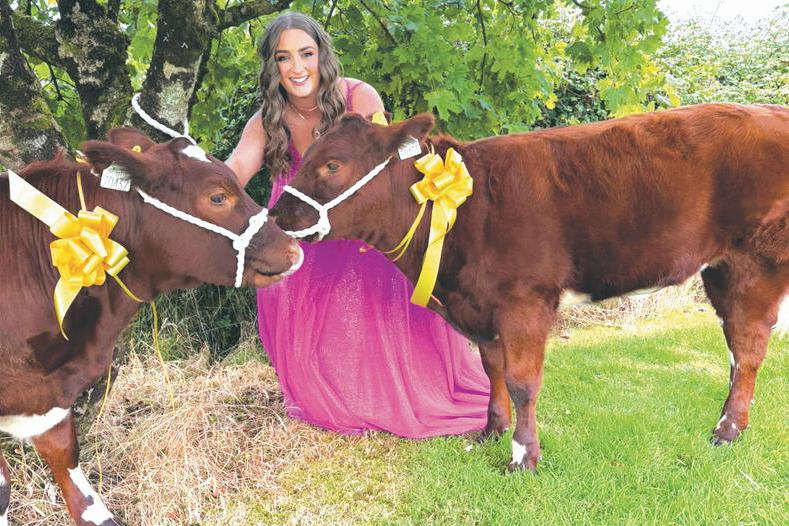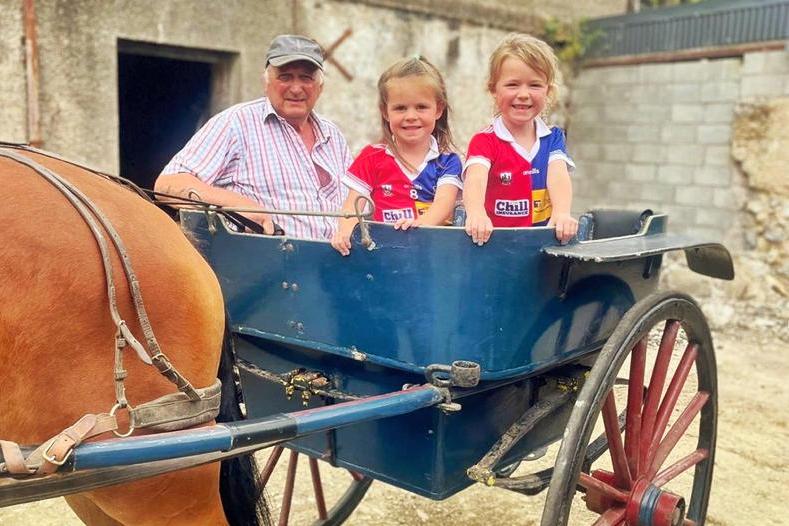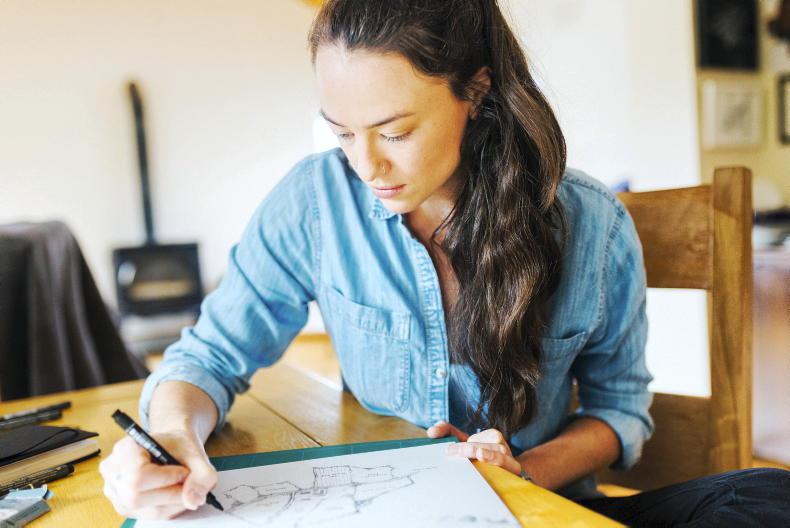It might not be Paris or Rome. But as an artist living and working on a sheep farm in the Cooley Peninsula, Irene Woods has never run short of inspiration. It could be the regal air of a mountain ram; the dance of light across the heather; a whisper of wind through a wild horse’s mane; a trio of flat caps footing turf; the focus of a fisherman mending his nets.
“You don’t have to go far. Constable (the English artist renowned for his local landscapes) just kept to his own area,” says Irene simply.
Today, however, Irish Country Living is meeting Irene on another peninsula – Dingle, to be precise – where her work is displayed at Castlewood House; the award-winning guesthouse run by her daughter, Helen Heaton.
Helen’s pride in her mother’s work is infectious, as Irene explains how she’s always had a “paintbrush or a pencil” in her hand since she was a child; even if art education in the convent schools at the time might have left a lot to be desired. “The art teacher was also the cookery teacher, because she was a nun,” she recalls, “and nuns didn’t qualify as art teachers in those days, because they weren’t allowed to go to life classes!”
A “ME THING”
As a teenager, Irene wanted to study dress design, but as the “second of a family of six living on a farm”, it just was not “feasible”.
Instead, she worked in accounts with Guinness, but after meeting her husband Liam – who is well known in agri and local enterprise circles – and marrying in 1963, the young couple moved to Castletown House on the Cooley Peninsula, where they built up their sheep farm while raising their family of four: Helen, Patricia, Liam and Susie.
But no matter how busy Irene was, she always made time to paint, setting up her easel in the corner of the kitchen – the warmest part of a house – to snatch any opportunity she could.
“I always held onto it, even when they were small and I was up to here in lambing sheep and whatever, I still kept it up,” says Irene. “You have to retain something for yourself.”
Everything that Irene learned about painting was through her own research and by studying other artists’ work. But while it could easily have remained just a hobby, she explains that she made a conscious decision to make it her career.
“At some stage you have to say to yourself: ‘Now, am I going to take this seriously or not?’ And you’re sort of at a crossroads,” she explains.
“If you go sort of just the hobby thing, you’re never going to take it seriously, but if you go the other way, you have to work at it – and that’s what I did. And I worked hard at it.”
HOBBY TO CAREER
One of the best decisions that Irene made was joining the North Louth Artists Group, which helped her to build her confidence and contacts.
She also set a certain standard for herself from the beginning, only exhibiting paintings that she was completely satisfied with and making sure to show them “in the right places”, whether it was in solo or group exhibits.
But her work did not just offer professional satisfaction; during the foot-and-mouth crisis of 2001, when the Woods lost 800 sheep in the Cooley Peninsula cull, painting provided a form of escape from the harsh reality of farm life at that time.
“There was a painting I did of Liam (Jnr) walking down the avenue with a lamb in each hand and a sheep following him, that was after the foot-and-mouth,” she recalls.
“That was my therapy – painting – and concentrating on the next exhibition for the group and whatever, because there was a lot of work involved in that. But it focused your mind on something else from what was going on at home.”
Fortunately, there is once again sheep farming at Castletown Farm with Liam Jnr; though Liam Snr also keeps a hand in. (“He’s retired now, so he’s just six and a half days instead of seven,” jokes Helen.)
PATIENCE
The farm and local landscape continue to be as much of an inspiration for Irene as ever, whether it’s her freelance or commissioned work.
In terms of the process, she paints in oils, using a palette knife, as she loves working with texture. She always tints her canvas before she starts and likes to start every painting by tackling the sky first. “Because the sky dictates the whole mood,” she explains.
Patience is also part of the palette, it seems.
“A painting starts with an idea, and you might think about it for a week, a month, six months, a year before you actually get down to do it,” says Irene, who also adopts a watch-and-wait approach when completing a work.
“When I think it’s finished, I will leave it on the easel for maybe a week and keep looking at it and sit it into a frame and do the same,” she says. “So I never finish anything until it has been sitting in the frame for a week.”
Irene’s paintings are in public and private collections in Ireland, Europe, the US and Canada, but perhaps the best showcase for her work is at Castlewood House.
As well as original paintings, Helen also has limited-edition signed prints on sale from €40 that make for special souvenirs, with the mountain sheep proving most popular with visitors.
As a farmer’s daughter far from home on the Dingle Peninsula, Helen smiles that the paintings are “a little bit of home”.
“Everything has a special significance,” says Helen, whose favourite painting is one of a horse (photographed here) that Irene painted for her especially.
And everything can be an inspiration. “If you keep looking, there’s beauty everywhere, and there’s something to paint everywhere,” concludes Irene.
“So I’ll just keep working at it.” CL
For further information, visit www.irenewoodsartist.com.










SHARING OPTIONS